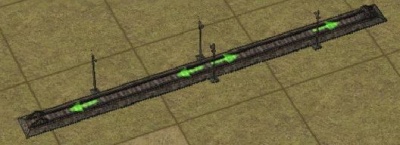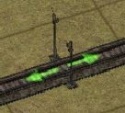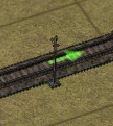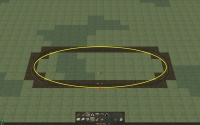Signals
Game Manual
- Basics
- Game content
- Infrastructure
- Vehicles
Main purpose of signals is to prevent trains from crashing into each other while driving on the same track and that's why they are important part of any railway system - safety first guys!
Signals divide railway line into series of "blocks". If one "block" is occupied by a train then signal dividing these "blocks" won't allow any other train to enter that occupied block
until this "block" is cleared.
Placing of signals:
one left mouse button click = two way signal will be placed on a railway track
second left mouse button click on the same signal = two way signal will be transformed to one way signal
(side of the track we clicked on will determine the orientation of the one way signal)
Signals cannot be placed in tunnels, on bridges, at stations and directly on railway intersections.
Different kinds of signals:
Block signals explained
Block signals allows access (green arrow down on the signal) only on the blocks which are not occupied by other train. Block is the space of railway between two signals.
Examples
In the first example you can see our example oval track with only one block signal present. This means the whole track is one block, from one end of the signal to another.
The signal will be always red when we put a train on the block.
By adding second signal on the other side of the oval, we creates two blocks of track. One train will be able to move, because the block on the other side of the signal will be always clear.




